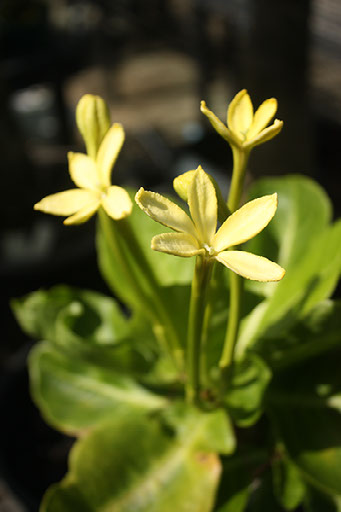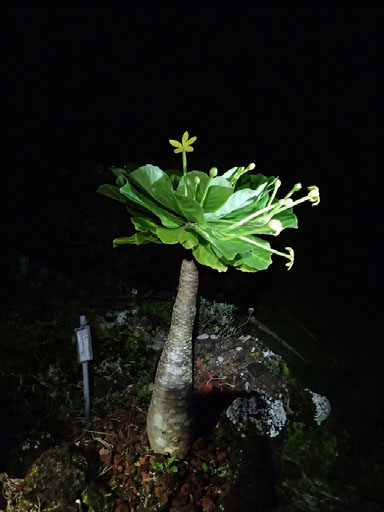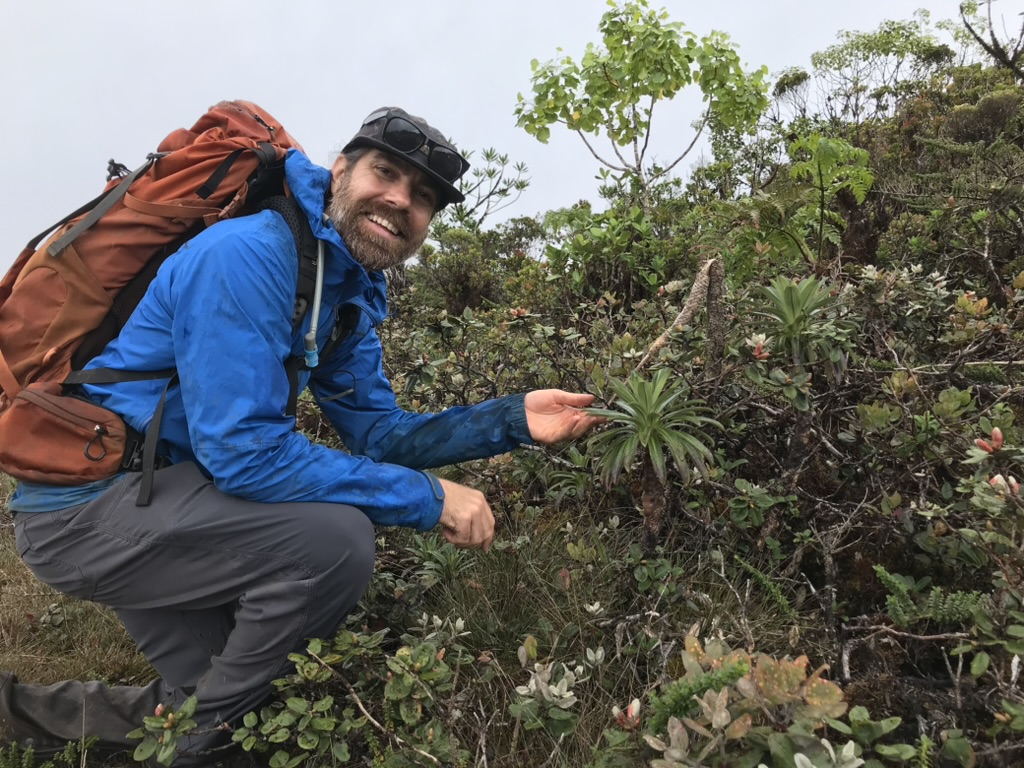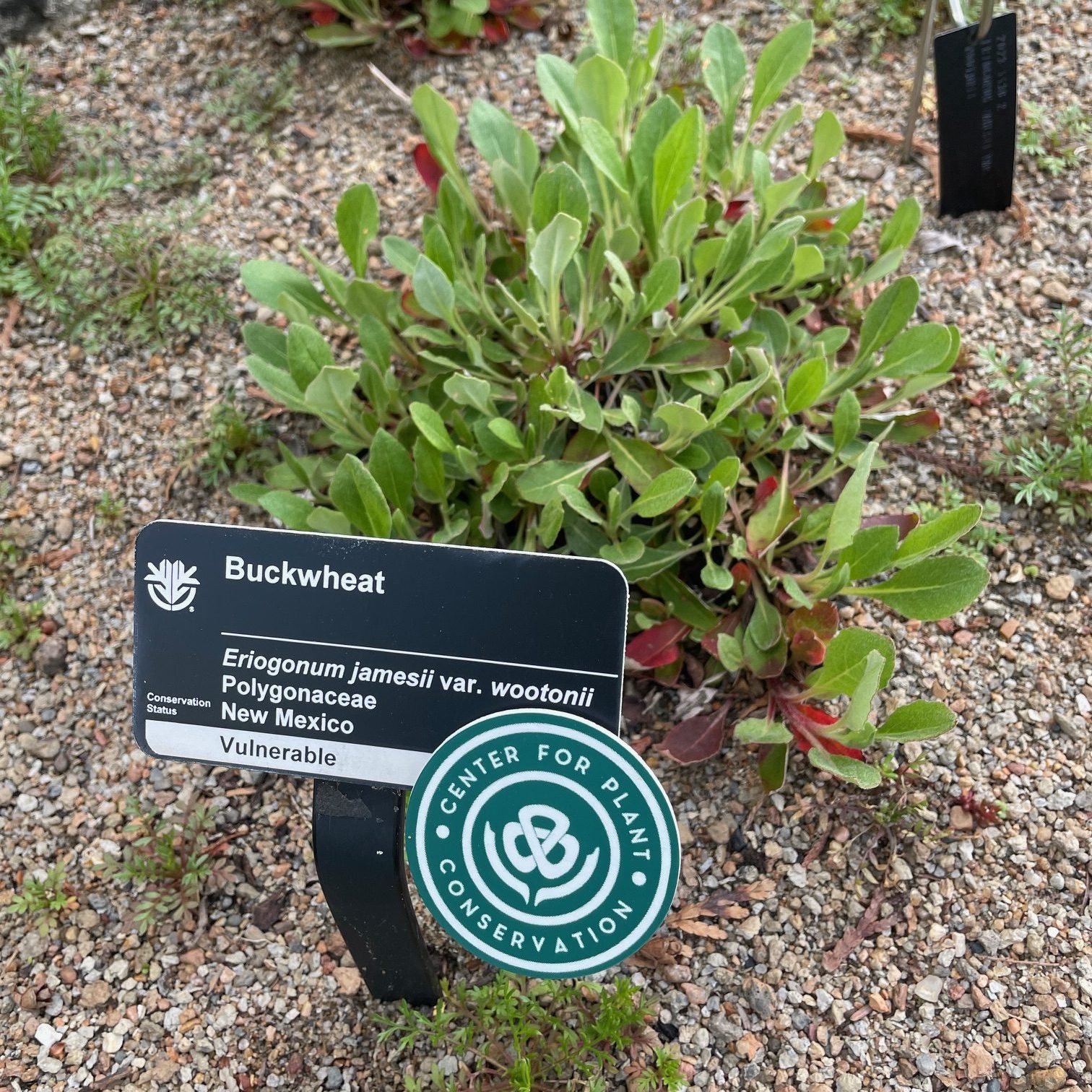Save Plants
CENTER FOR PLANT CONSERVATION
February 2018 Newsletter
Thank you as always for opening up another installment of Save Plants. This month, in honor of the recent Valentine’s Day, we recount the enthralling and sometimes tawdry sex life of plants. It is really a sordid affair, involving often beautiful flowers, multiple species, and false promises with little chance of reward. In other words, a normal day in the life of plants. Don’t believe me? Well, read on to learn more about how plants have co-evolved with many different animal species in the ultimate goal of reproducing. Plants and their pollinators are intricately linked and combined, providing untold benefits to humankind. So, here’s to the birds and the bees . . . and flies, beetles, and even mosquitoes that work with our plants to do all that they do for all of us.
Mystery of Flowers Unveiled: Reproduction to Parenting
William (Ned) Friedman, Arnold Professor of Organismic and Evolutionary Biology and Director of The Arnold Arboretum of Harvard University
Flowers play a central role in the reproductive cycle of plants. Their colors, shape, fragrance, and nectar are all designed to attract insects and other pollinators to carry the genetic material from flower to flower. While flowering plants are the largest group of land plants and the type of plants most familiar to us, they still hold much mystery as to how they evolved. Recent research findings shed light on some of these ancient flowering plants.
For 30 years, William (Ned) Friedman has been investigating a longstanding set of questions about the origin and early evolutionary history of flowering plants, Darwin’s so-called “abominable mystery.” His research has involved plant species native to the Namib and Sonoran deserts; rainforests of Queensland, New Caledonia; and most recently equatorial Africa. Many of the plants that form the foundation of this research program have been ex situ specimens in botanical gardens and university greenhouse collections. Indeed, some of the key taxa central to reconstructing the evolutionary history of plants can only be studied in garden and greenhouse collections because they are extinct in the wild.
Research from Friedman’s lab that was announced last week in the Proceedings of the Royal Society B uses just such a species, Nymphaea thermarum, a water lily from equatorial Africa. Sadly, as a consequence of habitat degradation, this beautiful water lily lives on only in botanical gardens or research greenhouses.
Reproductive Biology of Nymphaea thermarum
Flowers of Nymphaea thermarum are hermaphroditic. The flowers open and close over the course of several days. However, unlike most other water lilies where male and female functions occur on different days, in N. thermarum pollen release overlaps with the female phase, marked with the secretion of a prominent drop of fluid that covers the receptive stigmatic surface. Indications are that N. thermarum is predisposed towards self-pollination.
This process is important for the evolution and cultivation of this species:
- N. thermarum can self-fertilize. This may mean that remaining populations have little genetic diversity.
- Flowers can be emasculated by removing the anthers at least 24 hours before the bud first opens.
What happens after reproduction is also important to the story of N. thermarum. Rebecca Povilus (recent doctoral student, Harvard University), Pamela Diggle (professor, University of Connecticut), and Friedman, took advantage of the uniquely brief life cycle of N. thermarum to investigate the theory of inter-parental conflict in plants.
Parenting
Disagreements between mothers and fathers about how best to rear progeny is not restricted to humans—the battle of the sexes extends to plants too. In their paper “Evidence for parent-of-origin effects and interparental conflict in seeds of an ancient flowering plant lineage,” Povilus, Diggle, and Friedman demonstrate that in a member of one of the oldest flowering plant lineages still in existence, mothers (seed-bearing plants) and fathers (pollen-producing plants) each try to outsmart each other and distribute maternal resources to progeny in order to maximize their own fitness. Fathers display selfish behavior and attempt to drive maternal resources to their own progeny, while mothers take a more balanced view of what is universally best for all of her offspring.
This is the second piece of recent research from the Friedman lab to study an extinct-in-the-wild species. Working with another graduate student, Kristel Schoonderwoerd, the unusual reproductive biology of Franklinia alatamaha (Franklin tree) was analyzed for the first time and published in the Botanical Journal of the Linnean Society. If not for the efforts of William Bartram, who collected Franklinia seed in the late 1700s and introduced this species into gardens in Europe and North America, this extraordinarily beautiful late summer and fall flowering member of the tea family (Theaceae) would be unknown to us, having last been seen in the wild in 1803. All of this is a stark reminder that the conservation efforts of botanical gardens around the world are not only critical to preserving biodiversity, but also to unlocking the secrets of plants and their unique evolutionary history.
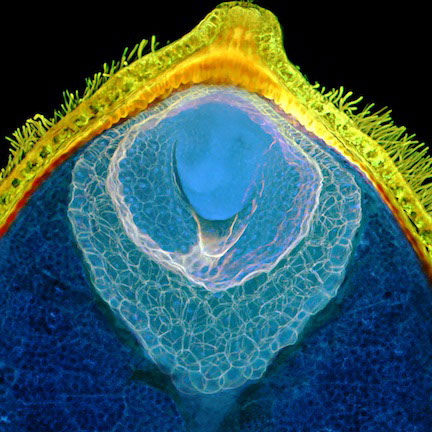
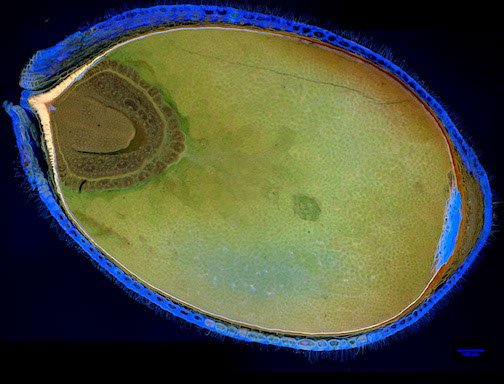
Photos of the inside of the seeds (taken with a confocal microscope). They both show the inside of mature or nearly-mature seeds – one shows the whole seed, one is a close-up of part of the seed. For scale, the seeds are about 1-2 millimeters long. The pictures show the major tissue types within a water lily seed: an embryo, it’s sibling tissue (‘endosperm’), a nutrient-storage tissue derived from the mother, and a fuzzy, hair-covered seed coat. (Photos @Rebecca Povilus)
Content provided by William (Ned) Friedman
(Reproductive Biology of Nymphaea thermarum taken from https://nthermarum.weebly.com/reproductive-biology.html, a website created and maintained by Rebecca Povilus)
For further reading:
“Floral biology and ovule and seed ontogeny of Nymphaea thermarum, a water lily at the brink of extinction with potential as a model system for basal angiosperms.” Rebecca A. Povilus Juan M. Losada William E. Friedman. Annals of Botany, Volume 115, Issue 2, 1 February 2015, Pages 211–226.
“Evidence for parent-of-origin effects and interparental conflict in seeds of an ancient flowering plant lineage,” Rebecca A. Povilus, Pamela K. Diggle, William E. Friedman. Proceedings of the Royal Society B, volume 285, issue 1872, 7 February 2018.
What is Darwin’s “abominable mystery?”
A problem that Charles Darwin called an “abominable mystery” was to determine how flowering plants became dominant so rapidly in ecosystems across the world. Darwin wrote to Joseph Hooker in 1879 that “the rapid development as far as we can judge of all the higher plants within recent geological times is an abominable mystery.” After all, plants existed for a couple of million years without any blossoms. Flowering plants seem to have arrived out of nowhere and for Darwin, this was a threat to his theory of evolution. Today, biologists have some evidence that pollinators may be an important part of the answer to the mystery.
The following images are from “Floral biology and ovule and seed ontogeny of Nymphaea thermarum, a water lily at the brink of extinction with potential as a model system for basal angiosperms.” Rebecca A. Povilus Juan M. Losada William E. Friedman. Annals of Botany, Volume 115, Issue 2, 1 February 2015, Pages 211–226.)
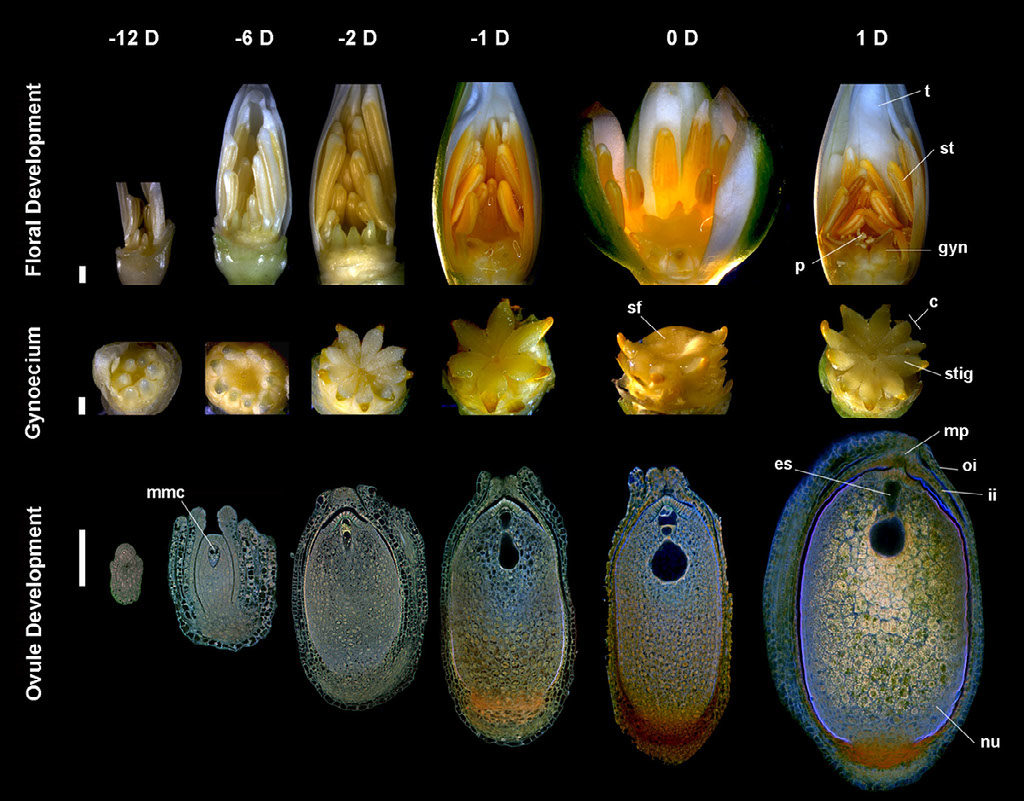
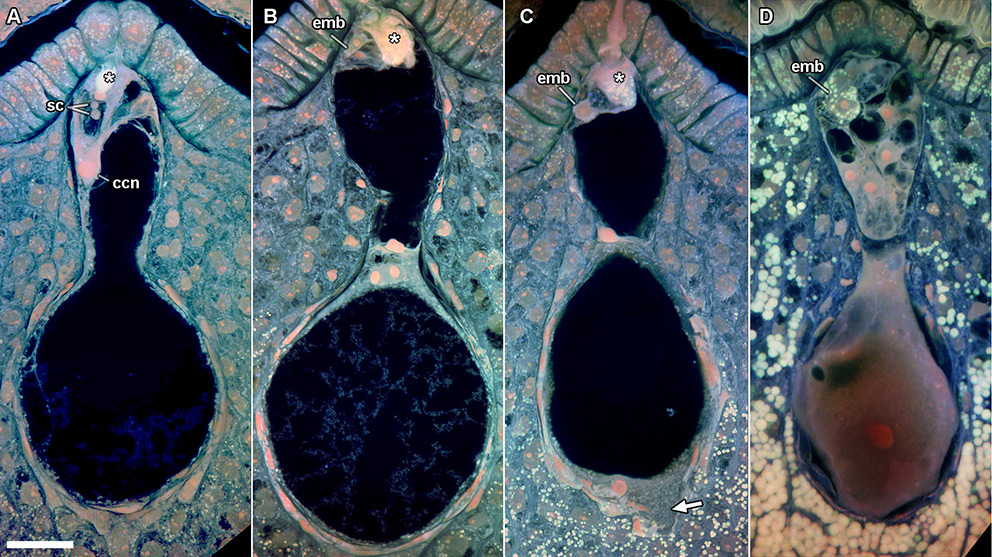
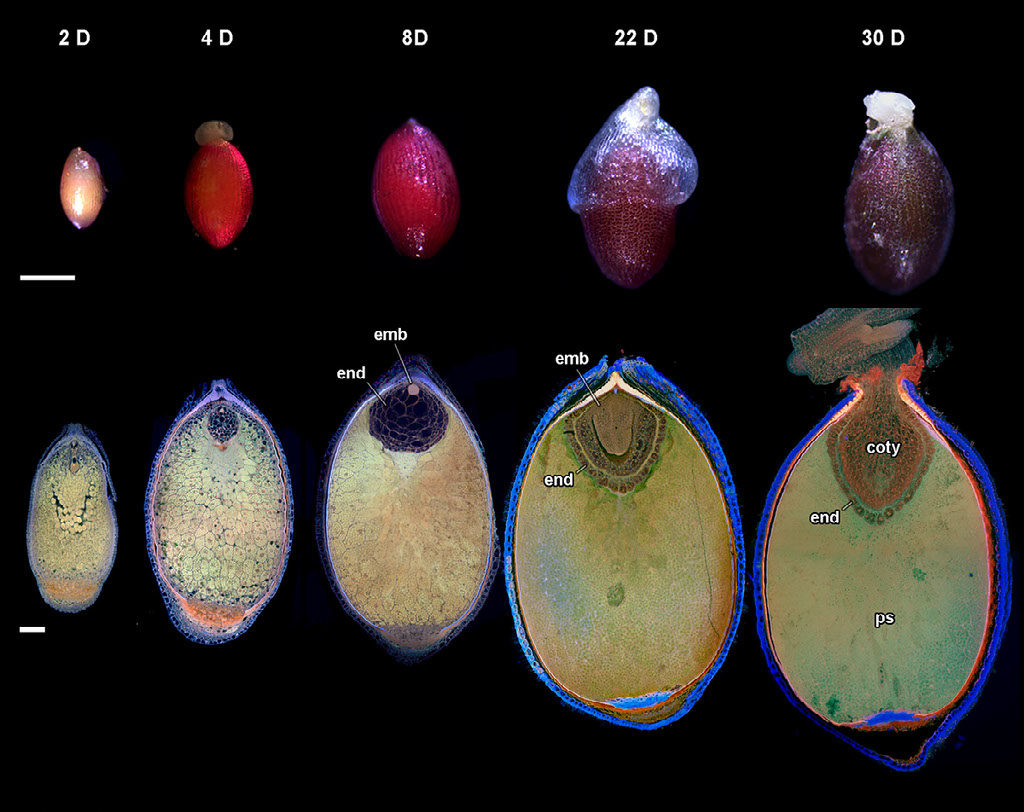
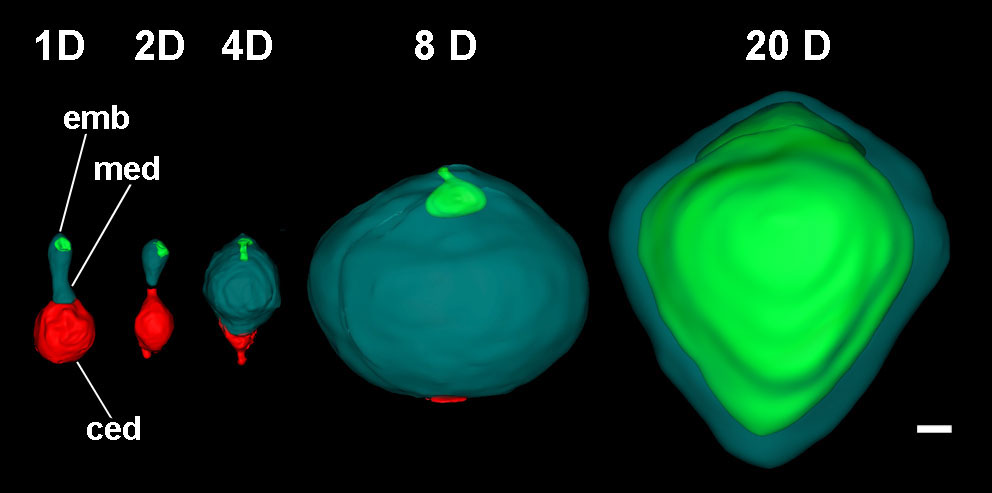
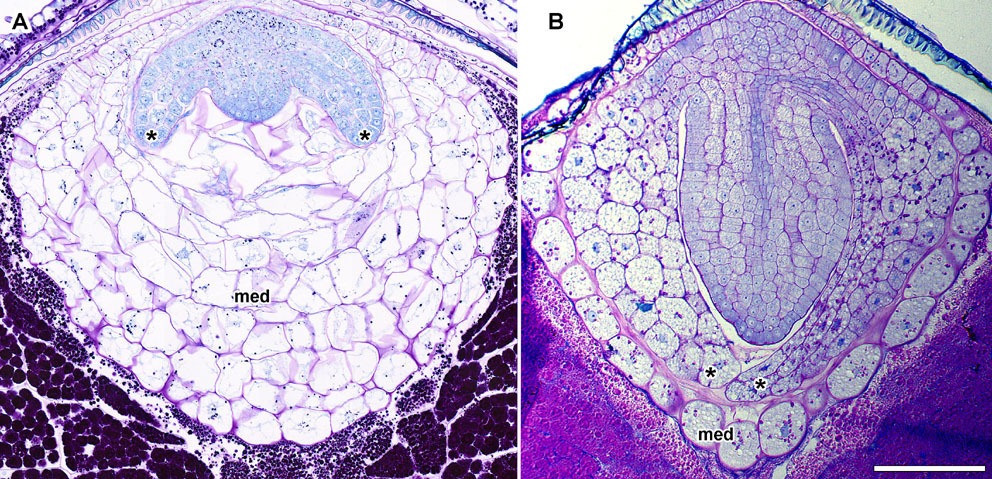
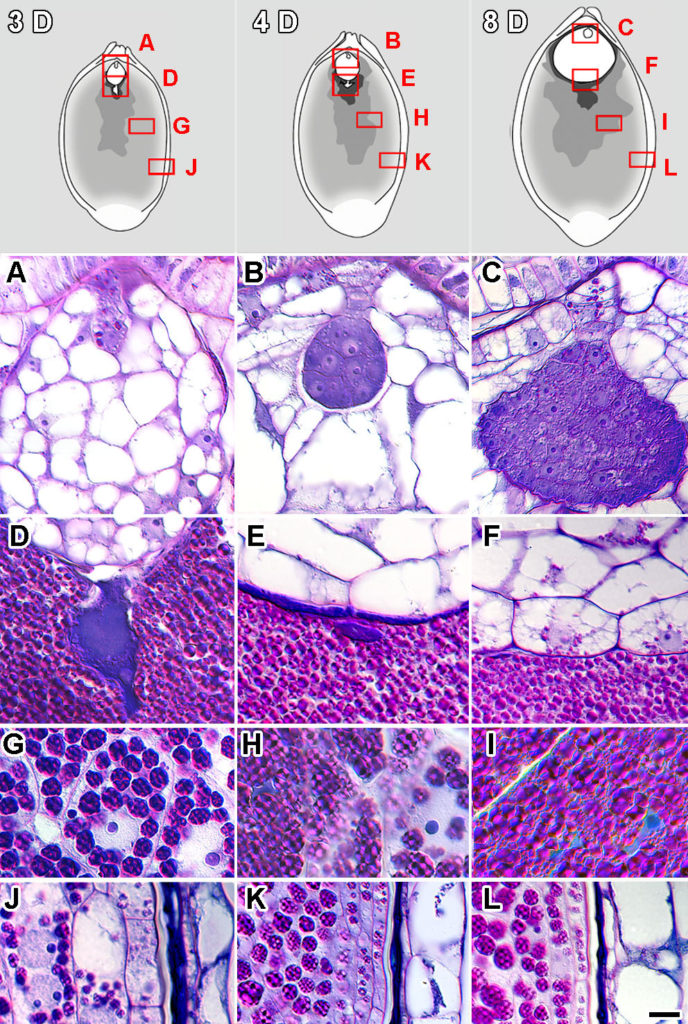
Who’s Your Pollinator?
Rappelling down cliffs on Kauai, sometimes suspended a thousand feet above the Pacific Ocean, botanists hand pollinated the critically endangered Hawaiian flowering plant, Brighamia insignis (Alula) in an attempt to save them now that its native pollinator is all but extinct.
There had been speculation that the natural pollinator of both Brighamia species was a native hawk moth that is now either extremely rare or extinct. No hawk moth had ever been observed visiting either species. To determine if the natural pollinator was a hawkmoth, Seana Walsh completed her master’s thesis research on the floral biology, breeding system, pollination ecology, and ex situ genetic diversity of Alula. Building on the four decades of work by botanists Steve Perlman and Ken Wood, Walsh examined floral traits to support or refute the hypothesis that Alula evolved a moth pollination syndrome. She conducted pollen manipulations on cultivated plants to assess the hypothesis that Alula is self-incompatible, that is, it cannot self- pollinate.
Alula is endemic to the island of Kaua‘i and historically to Ni‘ihau. Moth pollination for Alula was proposed based on a few floral trait observations; however, no moth pollinator has ever been observed visiting Alula flowers. There are three native endemic species of moths commonly known as hawk moths, sphinx moths, and hornworms that are reported to occur on Kaua‘i, but other species may have gone extinct. These three species are Hyles calida, Manduca blackburni, and Tinostoma smaragditis. Tinostoma smaragditis (or the Fabulous Green Sphinx of Kaua‘i) is only known from about 19 collections and was last seen in 2000. It is not unreasonable to speculate that the Fabulous Green Sphinx of Kaua‘i could be the single or one of several, native pollinator(s) of Alula.
Examining floral traits provided support for the hypothesis that Alula is adapted to moth pollination. Overall results of pollination treatments suggested a breeding system that was primarily based on cross-fertilization. The results of manipulative pollinations were difficult to interpret with any confidence, however. The quantity and quality of pollen produced was extremely low. Based on 29.5 daytime and 21.5 nighttime floral observation hours, it appears unlikely that anything is effectively pollinating Alula outplantings at the National Tropical Botanical Garden’s Limahuli Garden & Preserve. No moths were observed serving as pollinators. Alula faces severe challenges to reproduce on its own.
(Content provided by Seana Walsh)
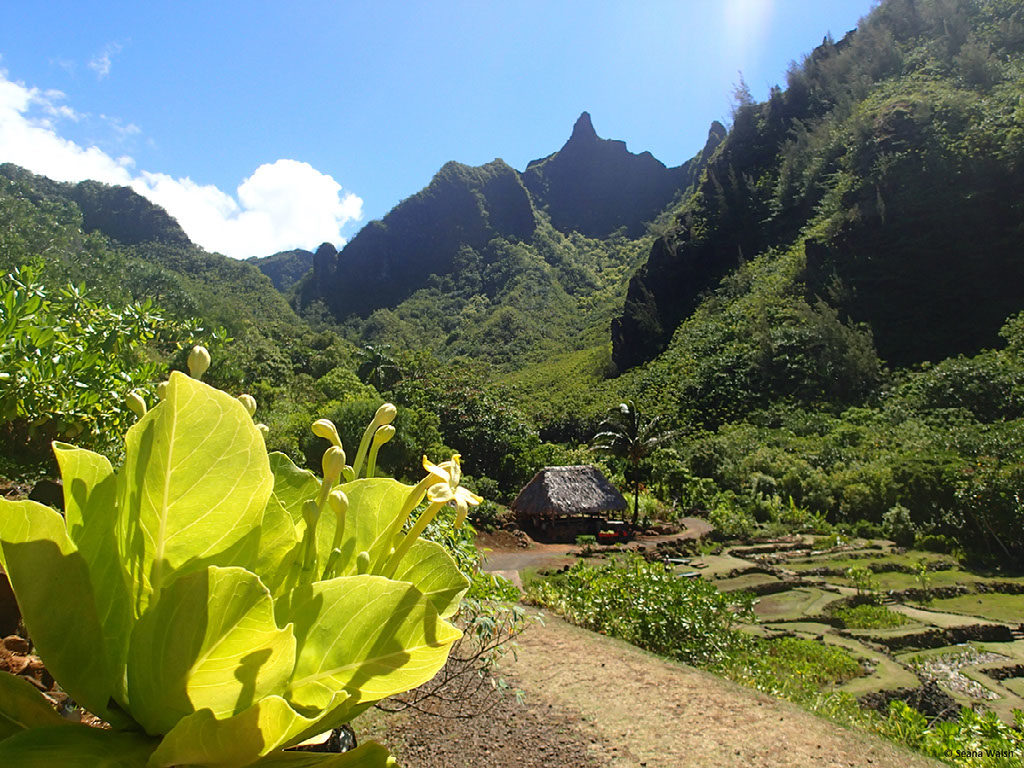
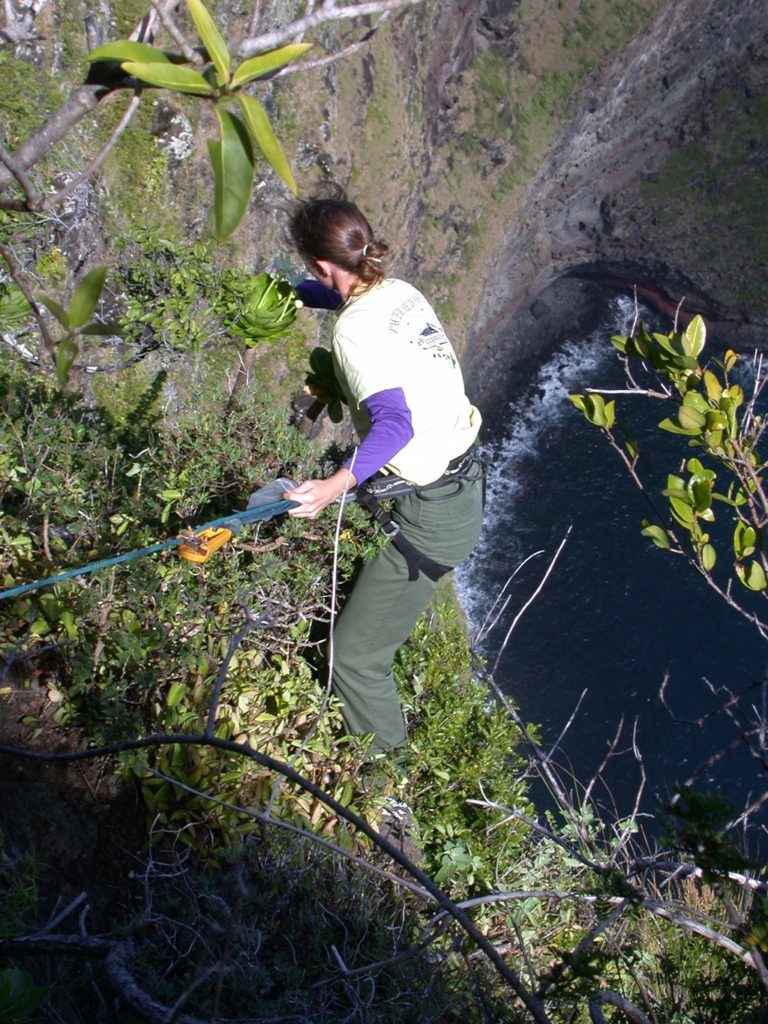

Student rappelling down cliffs to reach plants. Images provided by Ken Wood at the National Tropical Botanical Garden.
Cross-Pollinating Preservation
A thorny, deciduous shrub called Florida Zizphus (Zizphus celata) can only be found in two counties of Lake Wales Ridge in central Florida. The type specimen was collected in 1948, but apparently the species was not seen again and was presumed to be extinct, until Kris Delaney rediscovered a small group of plants in 1987. By 2001, eight other small populations were found.
Although adult plants flower profusely, with tiny yellow-green bisexual flowers that attract numerous diverse insect species, no fruit production occurred in the wild. Genetic research through Archbold Biological Station and the University of Florida showed that these remnant populations are clonal and generally composed of a single genetic individual. They are incapable of producing viable seeds. The good news was that the different populations contained different genotypes. Although research showed many of the genotypes to be cross-incompatible (not able to cross-pollinate), it also showed that there were at least three cross-compatible mating types.
Bok Tower Gardens began propagating clones from the various populations and created a captive population that by the mid-1990s began to produce an annual fruit crop. This allowed the open cross-pollination of compatible genotypes. However, low overall genetic variation remained a problem to species recovery. Then in 2007 five more populations were located, which included what are now two of the largest populations known, and which tripled the number of wild genotypes. The largest population even contained at least new mating types and produced some fruit, although no seedlings have ever been seen in the wild.
The addition of the new genotypes to the captive population at Bok Tower Gardens is underway and will be extremely important to the long-term preservation of the species. Seeds produced from crosses of all genotypes will be the best way to preserve the genetic diversity remaining in the species, both in the ex situ National Collection at Bok Tower Gardens, and in situ through population introductions. Already, seedlings propagated from many years of seed collection from the captive and the one reproductive wild population, representing the most genetic diversity available to date, have been used to establish new populations on protected lands. As these newly-created populations mature and become reproductive, it is hoped they will produce seeds and eventually seedlings, and therefore be self-sustaining to preserve the species.
(Content provided by Cheryl Peterson. Image: Flowers on a Ziziphus celata specimen in the National Collection, January 2018)
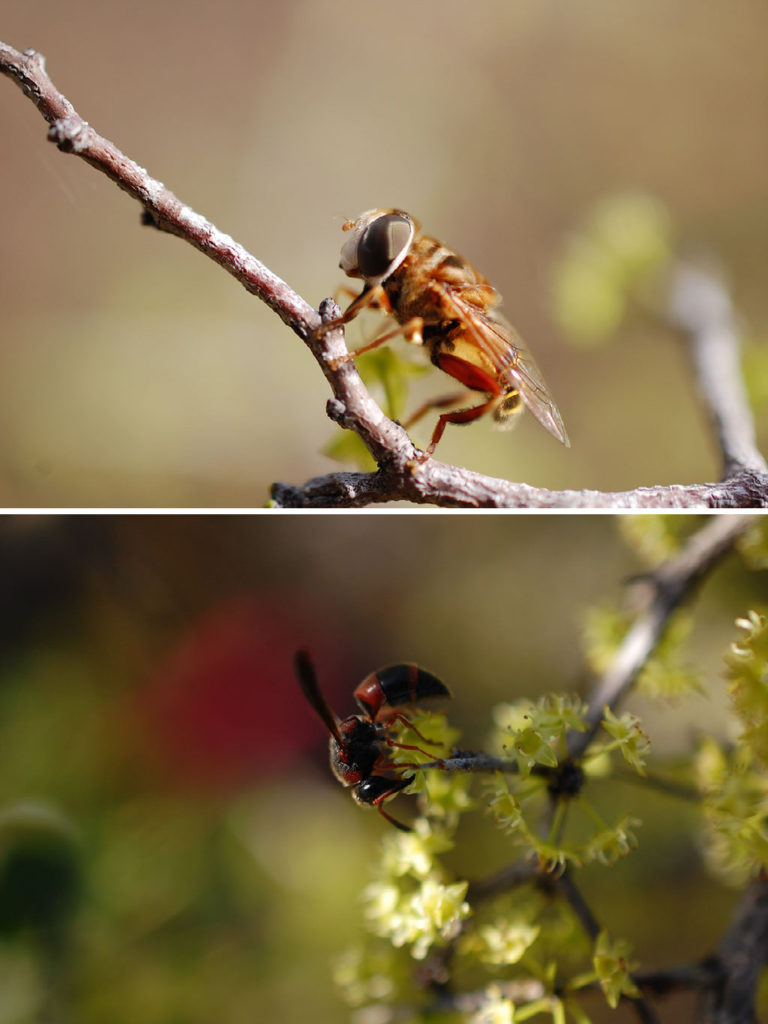
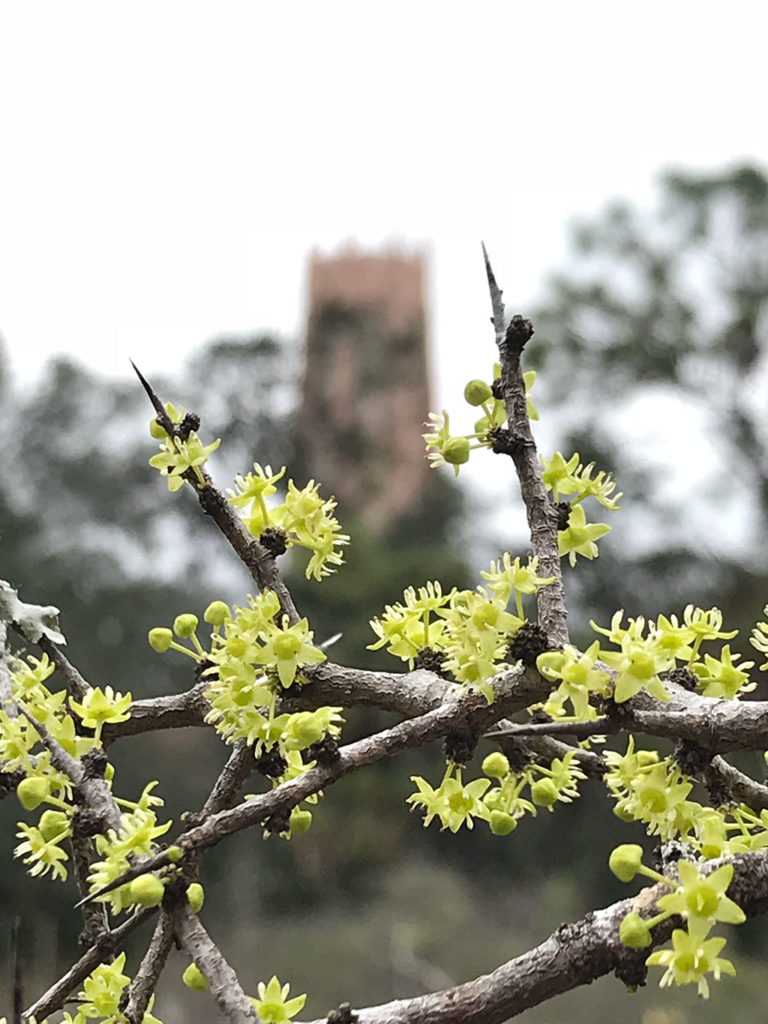
Lonely George
George is an endangered Florida semaphore cactus, Consolea corallicola, a prickly pear native to the Florida Keys. But this species can no longer reproduce, leaving George lonely.
Lonely George came to the Desert Botanical Garden as part of a backup collection. The Fairchild Tropical Garden in Florida has primary responsibility for George, but it is a “best practice” to have a backup collection elsewhere.
Why did George lose reproduction ability? There is no clear answer, but there are theories. One of those theories is based on the fact that George is a hexaploid plant with six complete sets of chromosomes. “Sometimes, when there are multiple copies of chromosomes they do not sort properly when the ovules and sperm are formed. Then when fertilization happens, it is impossible for a seed to form.”
Content from website.
Kimberlie McCue, assistant director of research, conservation and collections, states, “By maintaining a healthy collection of Lonely George and telling his story, the garden is able to bring attention to conservation on a larger scale and share common threats that may affect other cactus species.”
The Desert Botanical Garden set up a display as part of the garden’s Cactomania initiative. As guests entered the garden, they were greeted by a multi-sided display featuring Cactomania information and “Meet Lonely George.” The display told the story of the endangered Florida semaphore cactus and encouraged visitors to“Help Find George Friends” by snapping a photograph of their favorite cactus at the garden and sharing on social media with #friendsforgeorge. The garden printed and posted pictures that people had submitted, and created a collage of visitor photographs on the display. The display also included one of the specimens. Check out the Lonely George video here.
Information provided by Steve Blackwell, Conservation Collections Manager, Lauren Svorinic, Assistant Director of Exhibits, and the Lonely George website.
Get Updates
Get the latest news and conservation highlights from the CPC network by signing up for our newsletters.
Sign Up Today!Donate to CPC
Thank you for helping us save plant species facing extinction by making your gift to CPC through our secure donation portal!
Donate Today
